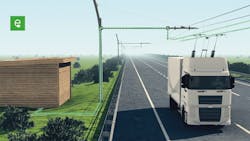I have found in my personal life that when it comes to one-size-fits-all, the promise and the reality are often quite different. I suspect the same is true in the business world.
Let’s look at this example. Visionaries in California are pushing toward a zero-emissions vehicle world. While the goal certainly is admirable, and attainable over time, it fails to recognize that the technologies needed to reach zero emissions are neither ready nor appropriate for adoption immediately by 100% of the market.
Advocates of these sea changes need to provide a vision that doesn’t ignore the realities of things like production capacity, technology immaturity and capital investment cost recovery. There will be a transition period that may last for decades as fleet owners deal with adapting to the new technologies.
Advocating change with an all-or-nothing approach likely inhibits discussion with fleets that have to work through the real-world challenges and still stay in business and maintain profitability.
Admitting that a transition period is real is not a compromise on the principles driving the change. It just indicates an understanding of the truck market where things take time, and nothing happens overnight. Setting aggressive goals is a part of making any change but recognizing market realities will go a long way toward bringing fleets into the discussion as partners in helping make that change a reality. They will be the ones buying and operating these assets and deal with the results of these changes.
Just something for suppliers, manufacturers and regulators to think about as they try to move toward a cleaner future for transportation.
About the Author

Michael Roeth
Executive Director
Michael Roeth is the executive director of the North American Council for Freight Efficiency. He serves on the second National Academy of Sciences Committee on Technologies and Approaches for Reducing the Fuel Consumption of Medium and Heavy-Duty Vehicles and has held various positions with Navistar and Behr/Cummins.
